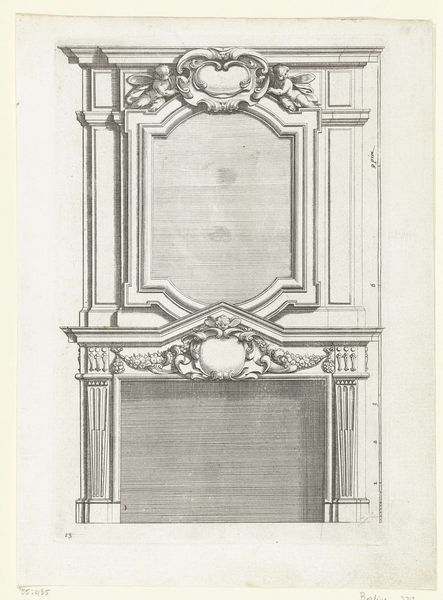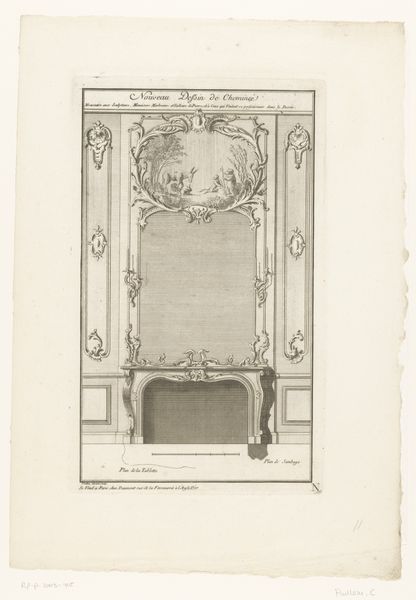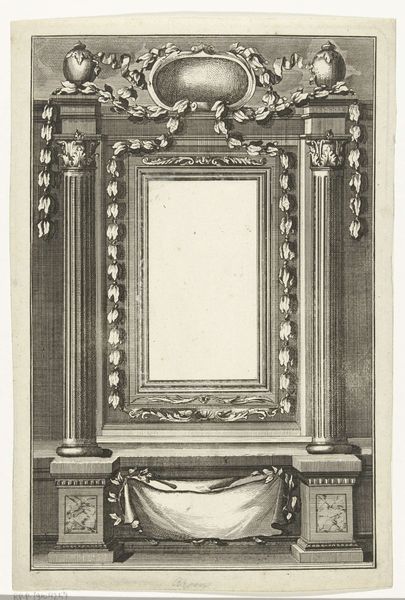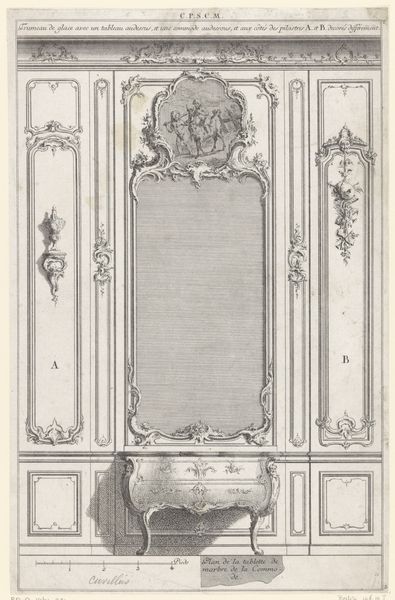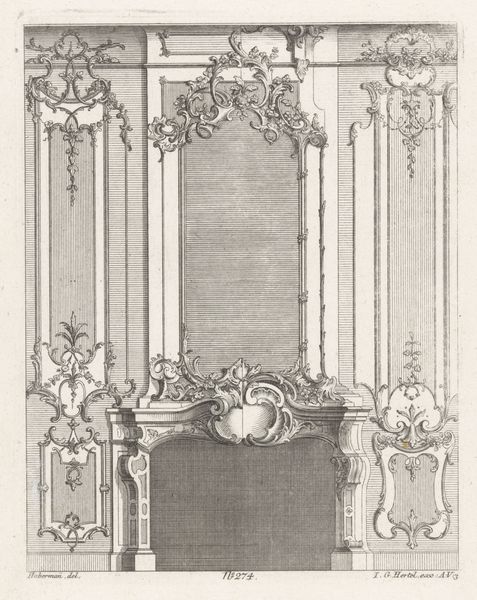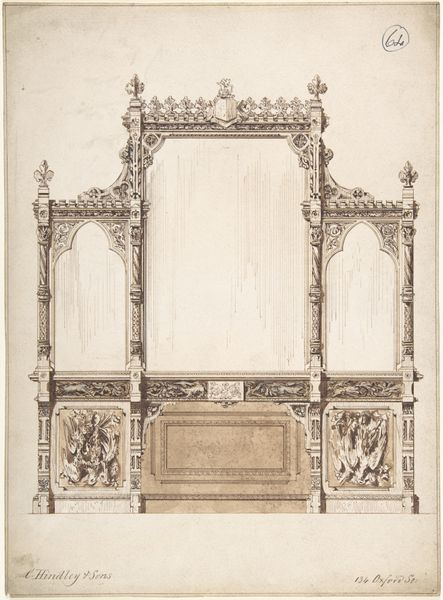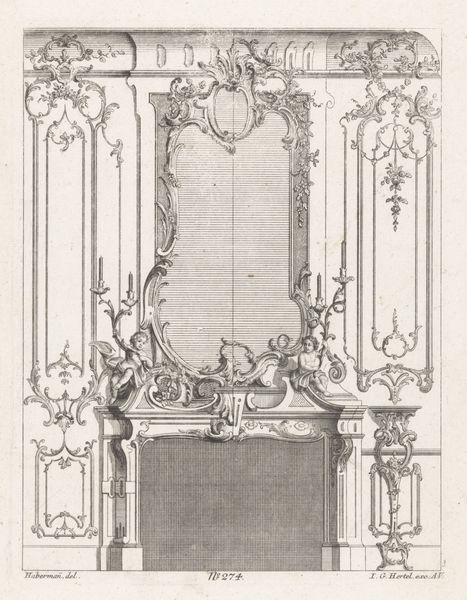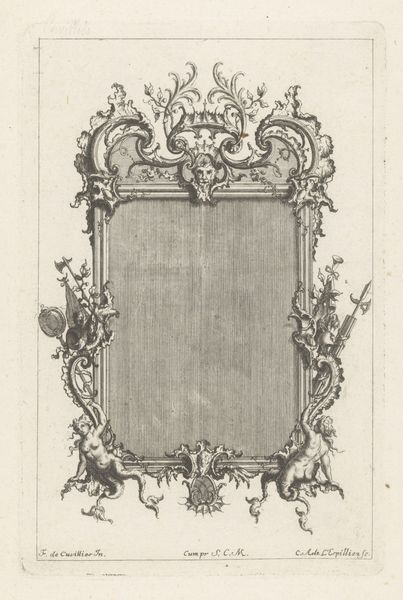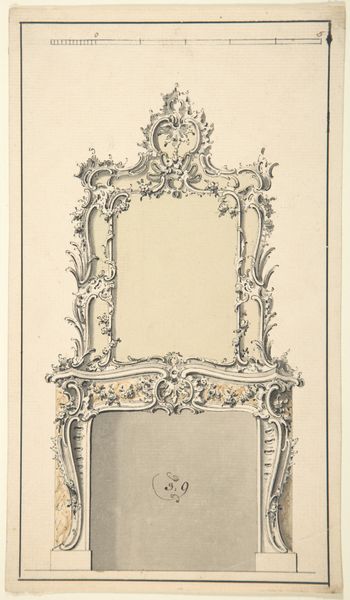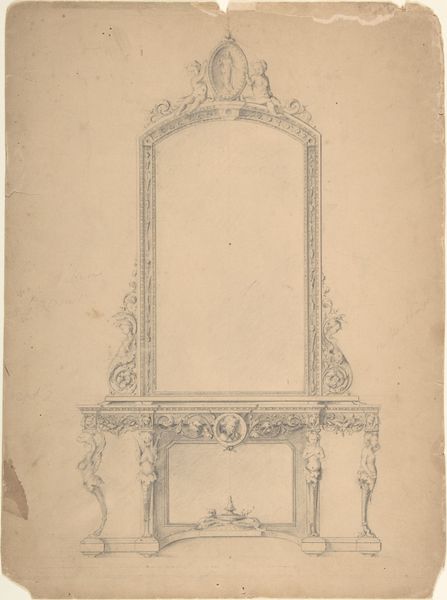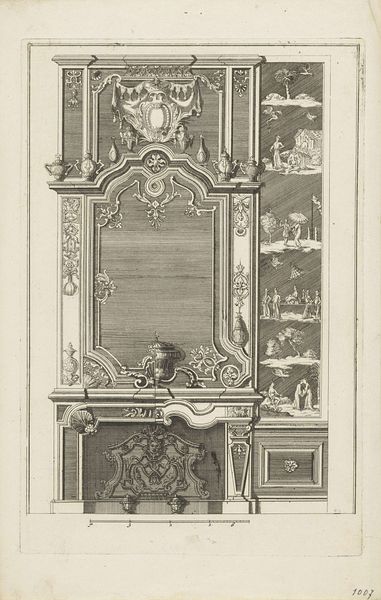
drawing, print, etching, engraving, architecture
#
drawing
#
baroque
# print
#
etching
#
etching
#
form
#
line
#
decorative-art
#
engraving
#
architecture
Dimensions: height 275 mm, width 193 mm
Copyright: Rijks Museum: Open Domain
Curator: This print is entitled "Tafel met grote spiegel" created around 1712 by Daniël Marot. It's currently held in the collection of the Rijksmuseum. Editor: My initial reaction is one of overwhelming ornamentation! It embodies the Baroque fascination with opulent detail. There is almost too much to absorb at once. Curator: Precisely! The drawing exemplifies Marot’s expertise in interior design. Note the balance in the composition; the emphasis is on symmetry. The formal arrangement provides visual harmony. Editor: But that “harmony,” if we can call it that, is deeply ideological. This excessive decoration served to broadcast wealth and power. I can't help but think of the inequalities baked into such displays of luxury. Who got to see themselves reflected in these grand mirrors? And at what cost? Curator: The visual language is rooted in classical motifs—look at the acanthus leaves, the cherubs, the allegorical figures supporting the table. Editor: Right, drawing from the antique to justify contemporary aristocratic power. Those muscular figures, burdened with holding up the table... they're not just decorative, but function to naturalize servitude. Curator: And what about the virtuosity of the printmaking itself? The line work, the texture. Editor: Sure, the technique is remarkable. Etching and engraving combine here to simulate the depth and complexity of these decorative objects. Yet the very skill with which it’s rendered seems to reinforce its role as propaganda for the elite. How are we meant to relate to this image of excessive self-regard? Curator: Regardless, its intricate style served to instruct craftsmen across Europe! It set a standard for elegant furnishings for decades to come. Editor: Indeed! It illustrates both aesthetic ambition and deep social inequity. It is impossible to simply enjoy its "harmony," and still have space for political thoughts! Curator: Yes, its legacy is, ultimately, the way we engage with beauty, which continues to exist on these difficult grounds.
Comments
No comments
Be the first to comment and join the conversation on the ultimate creative platform.

